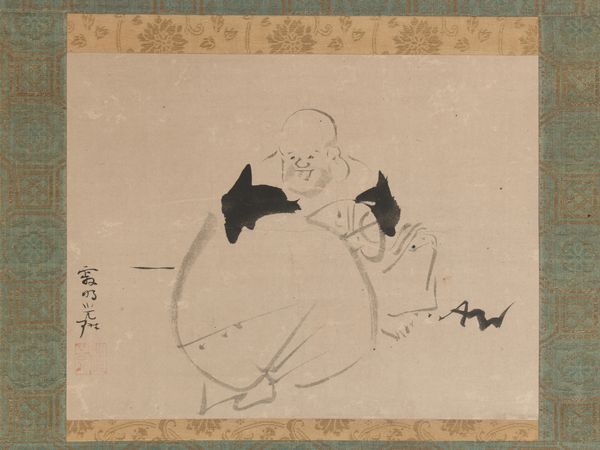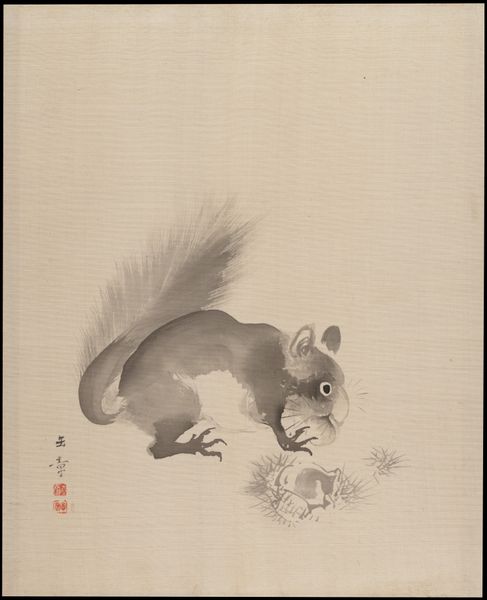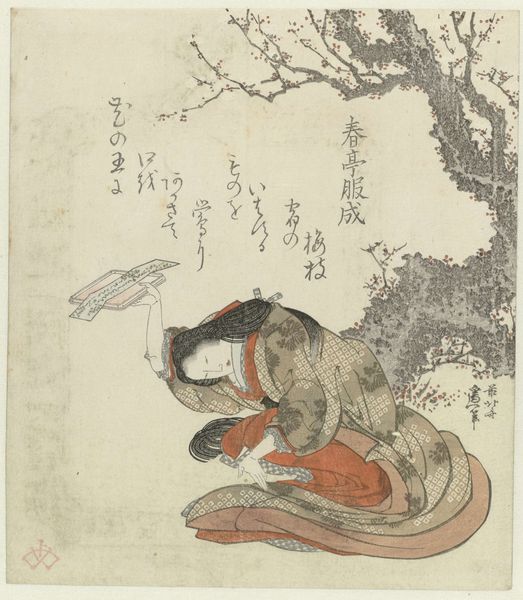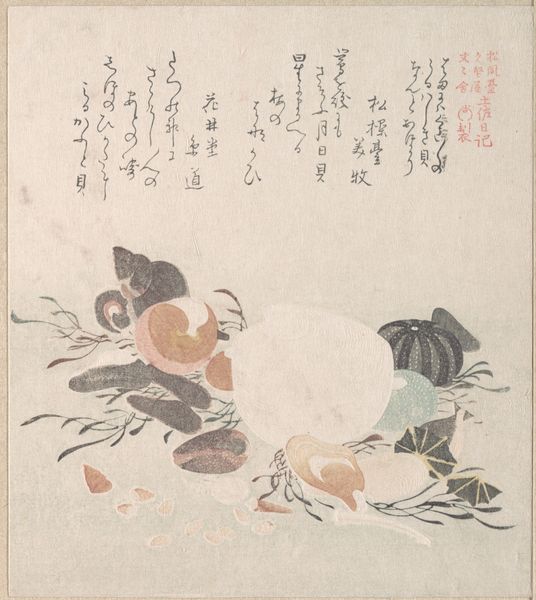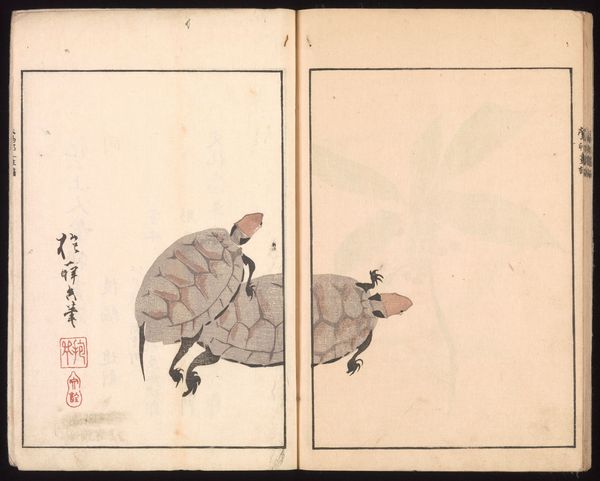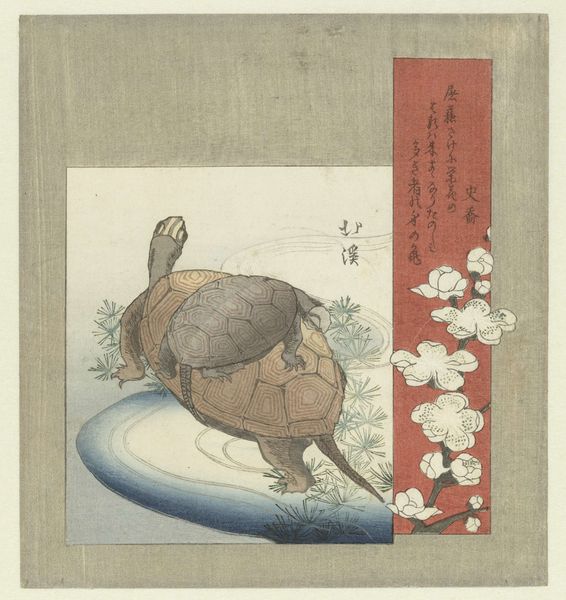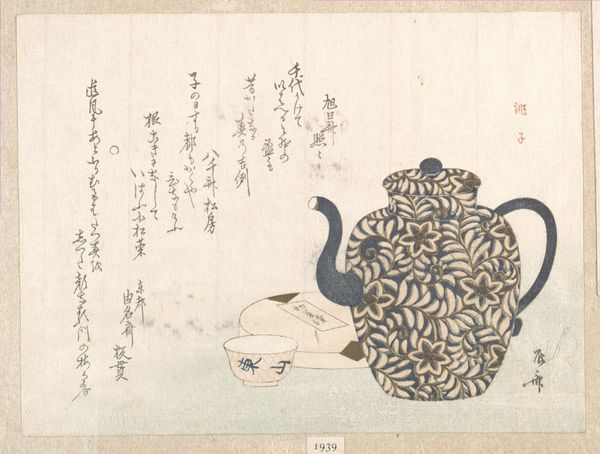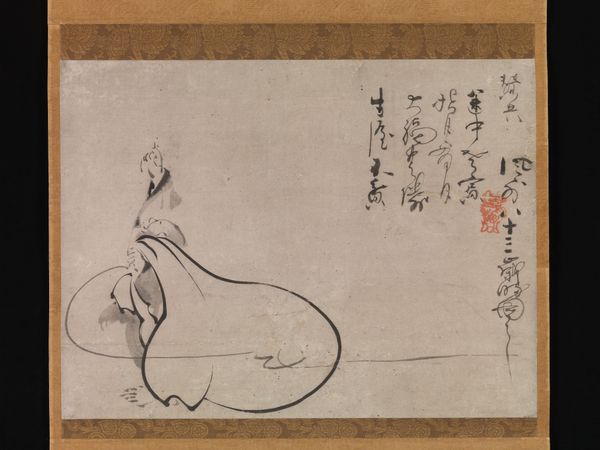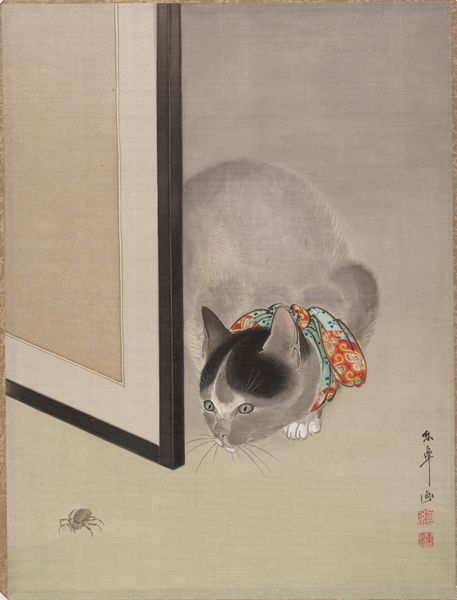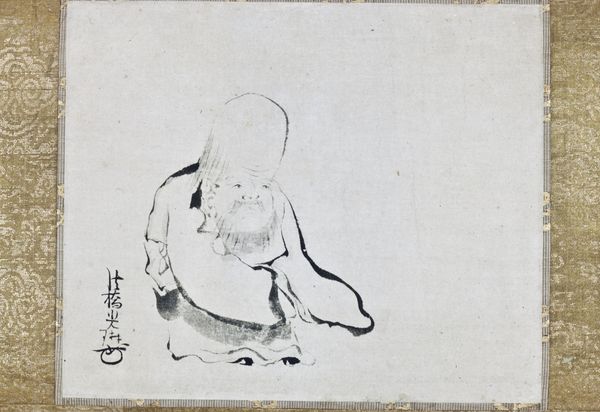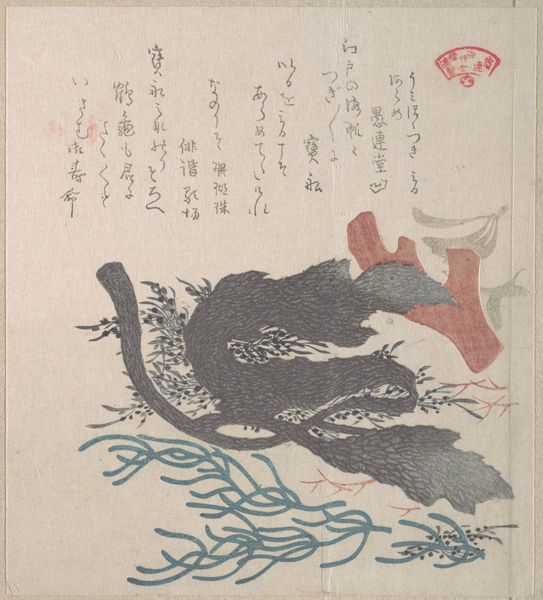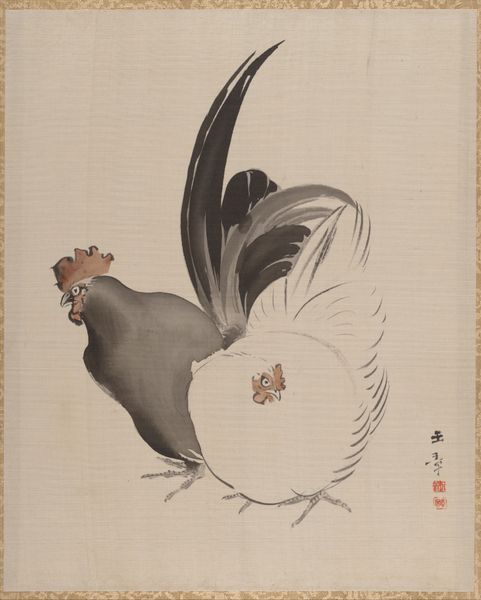
Dimensions: 13 1/2 x 10 7/8 in. (34.3 x 27.6 cm)
Copyright: Public Domain
Editor: So here we have "A Pair of Puppies" by Kawabata Gyokushō, made with ink, sometime between 1887 and 1892. I find the brushstrokes very delicate, especially the shading on the darker puppy. How do you read this drawing? Curator: From a materialist perspective, consider the socio-economic factors driving the production of ink paintings during the Meiji period. Were these materials readily available? What labor was involved in their preparation? Was there a difference between the kinds of inks and brushes affordable to the elite versus the working class? Editor: That’s a good point. It makes me think about the access artists might have had to materials, impacting the type of work they could produce. Did the rise of industrial production influence the making of art materials, like inks? Curator: Precisely! Mechanization certainly affected the uniformity and accessibility of certain materials. Look closely at the paper itself, its texture and the way it receives the ink. Is this mass-produced paper, or something more specialized and costly? That speaks volumes about the artist's intended market and audience. Editor: I see. So, understanding the material conditions sheds light on not only artistic choices but also social structures surrounding the art world at the time. Thinking about it that way changes how I see the finished artwork itself! Curator: Absolutely! It grounds the aesthetic experience in the reality of production, challenging romantic notions of artistic genius and forcing us to consider the economic and social forces that shape artistic expression. Editor: Thank you, it is incredible how considering materiality enriches our comprehension! I’ll remember to look beyond just the subject matter moving forward.
Comments
No comments
Be the first to comment and join the conversation on the ultimate creative platform.
